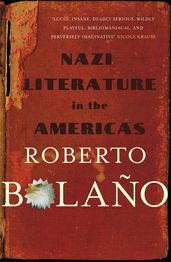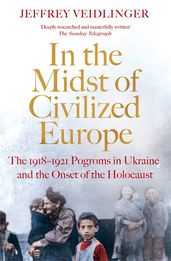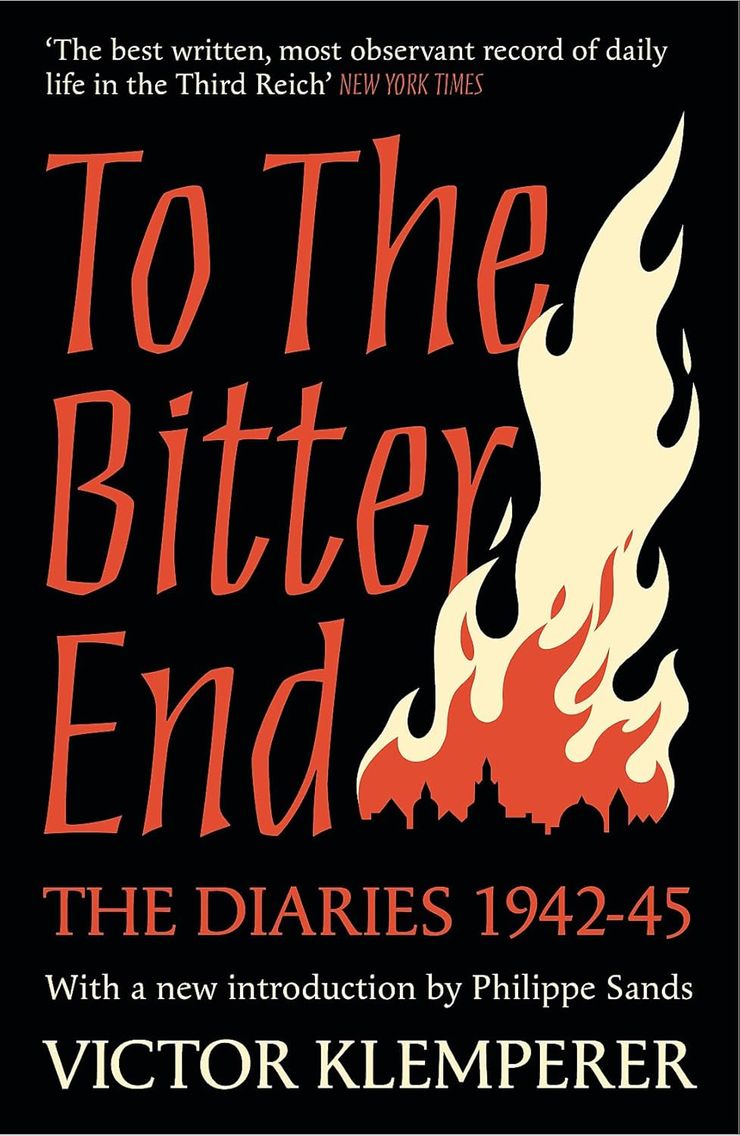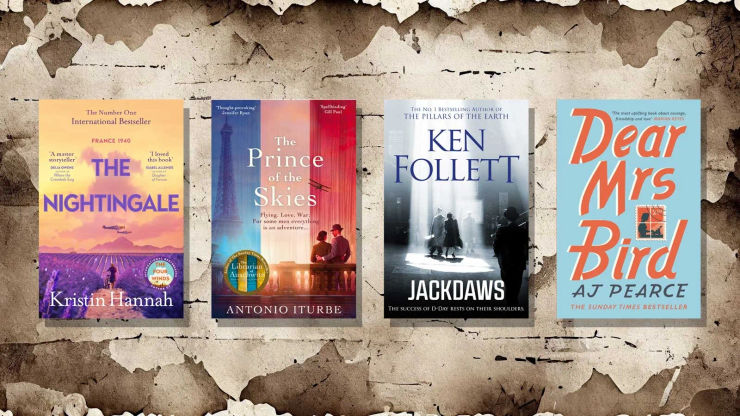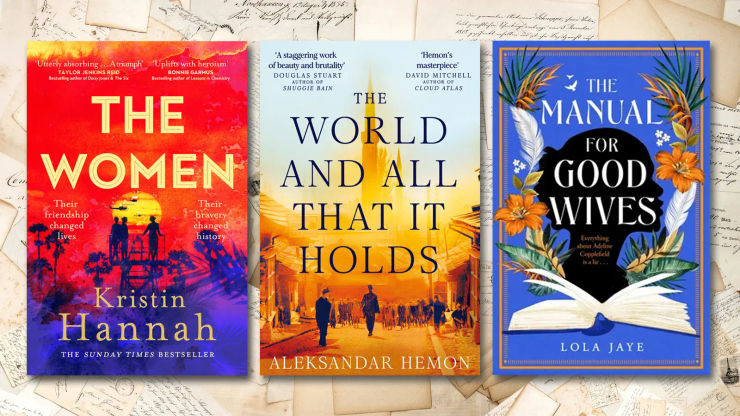Author Stuart Nadler recommends five books about World War Two
Literary fiction and non-fiction that captures some of the realities of the Second World War and its aftermath.
Stuart Nadler spent ten years researching and writing his new book, Rooms for Vanishing. It's an epic novel of grief and hope and one family blown apart by war, specifically World War Two. 'While writing Rooms for Vanishing,' he says, 'I obsessed over this idea – how to write a book about catastrophe and also at the same time about life.' Here, he discusses five books that, whether through delirious invention, exhaustive research or meticulous diary-keeping, depict both catastrophe and life before, during and after the Second World War.
The Fictions of Bruno Schulz
by Bruno Schulz
A book of unsurpassable beauty and strangeness, and quite possibly among the most influential works of twentieth century literature, this book takes place in the skewed and occasionally imaginary version of Schulz's hometown of Drohobycz, Poland. Schulz is known less for his astonishing work than for the way he died – as a captive of a sadistic Gestapo officer who forced him paint to murals on the walls of his daughter’s bedroom, and later murdered on the street by a rival of that officer. Schulz published only two slender books of stories, often published in English as one. Like Franz Kafka, to whom Schulz is often compared, and whom Schulz translated into Polish, his work bends at the corners of sense: one is constantly encountering in Schulz’s small pictures of childhood and domestic life a sense of imminent catastrophe. Schulz was at work in the final years of Jewish Europe, and one can read his distortions and vanishings as a prophecy of what was to come. When he was killed, he was rumored to have been at work on a novel, called The Messiah, and while friends of his claimed to have read it, no trace of it has ever emerged. Some of Schulz's best work, which you can read here – like Fathers Last Escape, or the luminously good Birds – are among the very best stories ever written.
Nazi Literature in the Americas
by Roberto Bolaño
A work of enormous imagination and power and humor, this a vivid, grim, gonzo book about writers and writing and the dark intersections between literature and power and government. Among Bolaño’s astonishing body of work – one that contains two genuine masterpieces, and an array of smaller and spectacular miracles – this book is one of his greatest achievements: an imaginary compendium of South America’s greatest literary Nazis. Structured like an encyclopedia, and full of tiny biographical sketches, the book, like all of Bolaño’s best, thrives as a delirious admixture of styles – at once exploding with violence and beauty and the long sweep of the century’s worst tragedies.
In the Midst of Civilized Europe
by Jeffrey Veidlinger
A searing and terrifying and immaculately researched book about the history of pogroms between 1918-1921 in what is now Ukraine and Poland. The violence of this history is often dwarfed by the cataclysmic destruction of Jewish Europe that followed, but Veidlinger’s work depicts a system of terrorized violence that masquerades as something random, but what was in fact sponsored by the state. These smaller massacres are an obvious prelude to what arrives in these same shtetls and cities twenty years later. An important book to contextualize the horror of what was to come.
Enemies: A Love Story
by Isaac Bashevis Singer
Singer’s work exists mainly in two categories: the work he made about life in the last moments of Jewish Europe (The Family Moskat, the Magician of Lublin, Shosha), and the work he made about his new life in America. Enemies: A Love Story is the best of the latter group: a wonderful and devastating and comic novel about survivors in New York. Herman is grieving the loss of his wife, and has married the Polish woman who helped him hide out the war. In New York he begins an affair with a woman named Masha, who struggles to coexist with her own trauma. Amid this, Herman discovers that his wife is not dead, but is living nearby in New York. This is Singer at his absolute best – dizzyingly brilliant, humane, with his arms stretched as wide open as possible. A miracle of a novel.
To The Bitter End: The Diaries of Victor Klemperer 1942-45
by Viktor Klemperer
Among the many serious diarists whose work has helped to clarify the horrors of life during wartime, very few offer a picture quite like Klemperer’s diaries do. Klemperer was a literary scholar, and a professor at a university in Dresden, and an inveterate and lifelong chronicler of his own life. Three of his diaries have been published, and they chronicle the upheavel of the Weimar years, the slow demolition of daily life following Hitler’s election, and finally, the years of Communist rule in East Germany. The most indelible of these diaries are his war-time writings. Because he was married to an Aryan, he was able to avoid the worst – although in his diaries, one is able to get a close and keenly observed picture of the daily indignities. Readers encounter the product of the Reich’s race laws – laws that eventually cost Klemper his job at the university, his home, his access to food, and when the Reich says that Jews can no longer possess pets, readers see him abandoning his cat. While there are many similarly indelible documents of the wartime, Klemperer’s remains among the most fascinating – what stuns and horrifies this many years later is the way ordinary citizens go on about their life, inured to the suffering of their neighbors, their daily horrors, their despair, their suicides, and eventually their vanishings. An unforgettable document of the horror of war.
Stuart Nadler's latest novel, Rooms for Vanishing, is out now
Rooms for Vanishing
by Stuart Nadler
How much of our identity is defined by the grief we carry? In 1938, a family is torn apart by war, scattered across the globe and through time itself. As their separate lives unfold across parallel realities – from Nazi-occupied Vienna to 1960s Montreal and beyond – the threads that tie them together refuse to break. This is an epic, heart-stopping story of hope, loss, and the possibility of finding what was lost.

